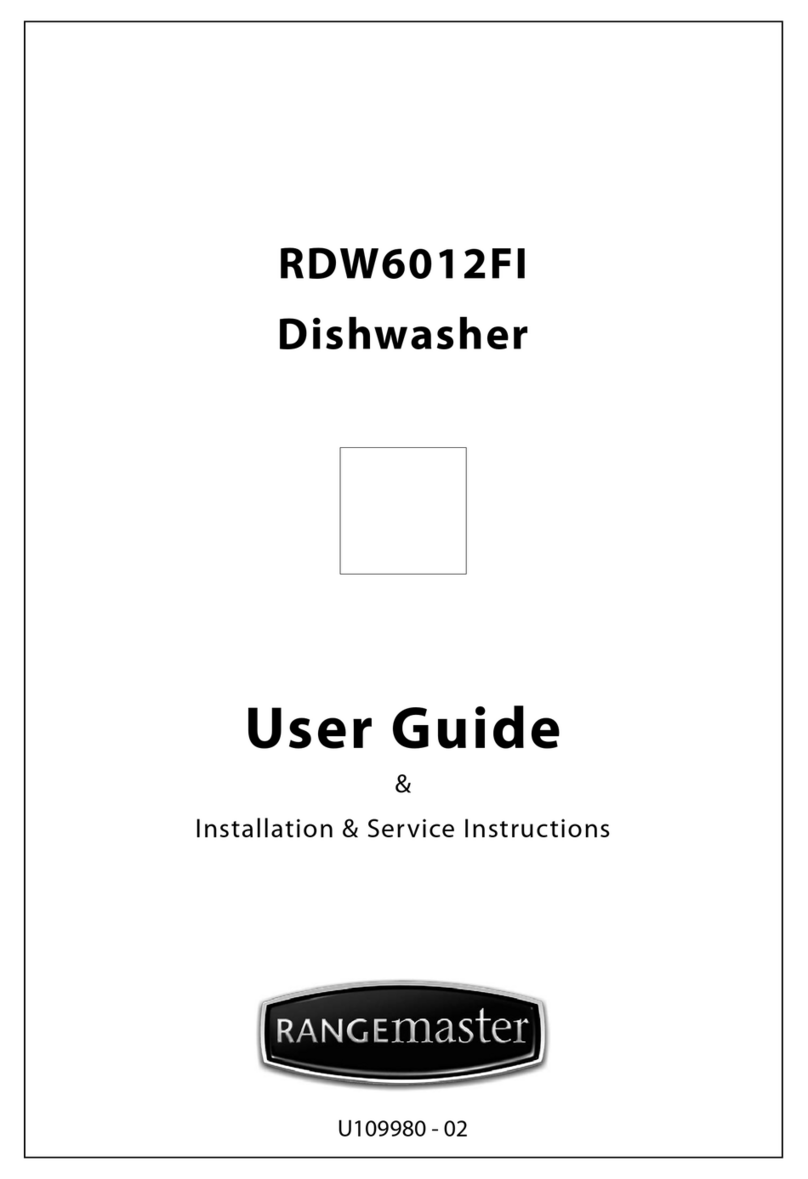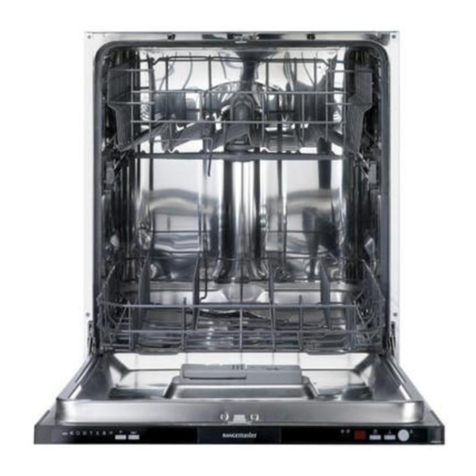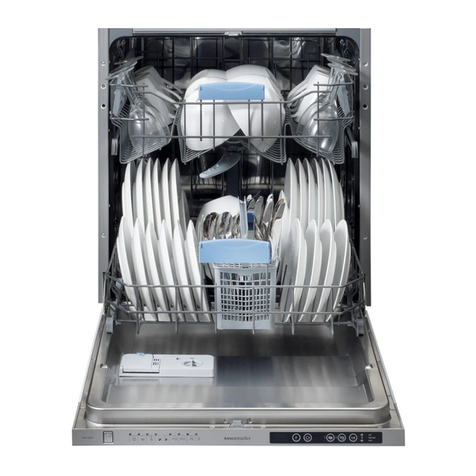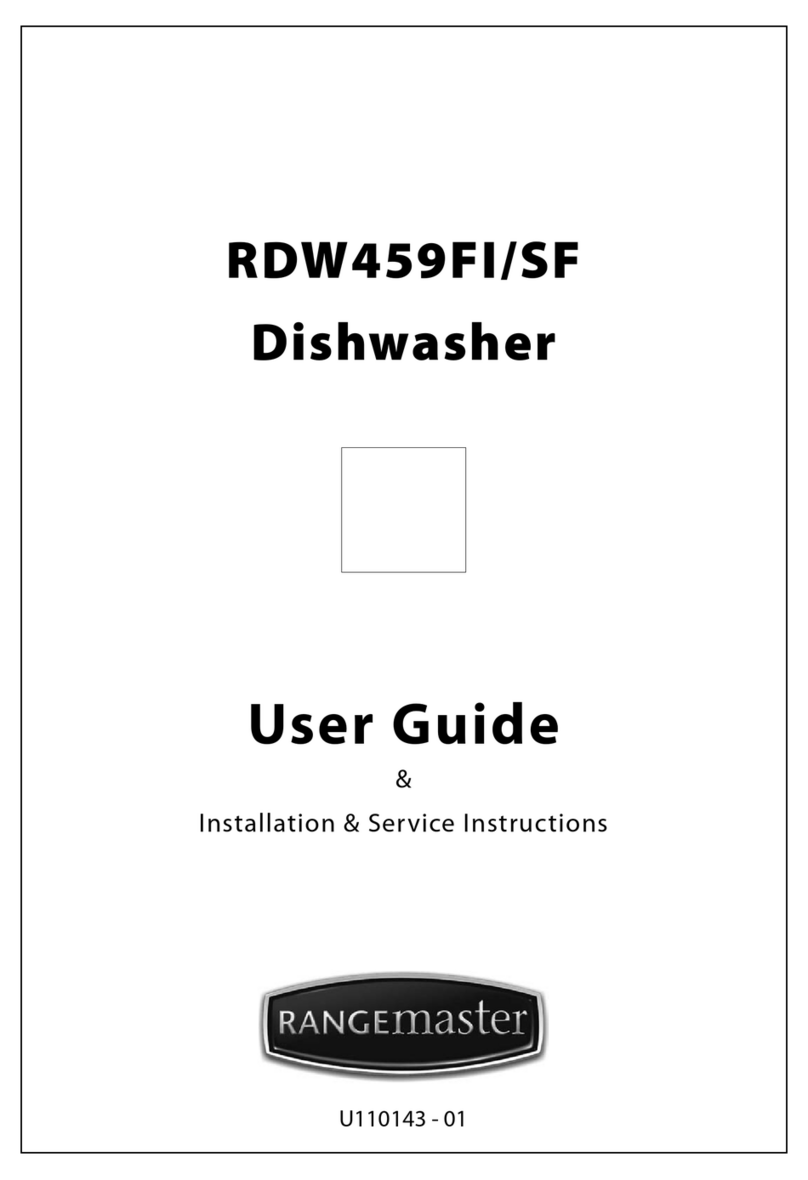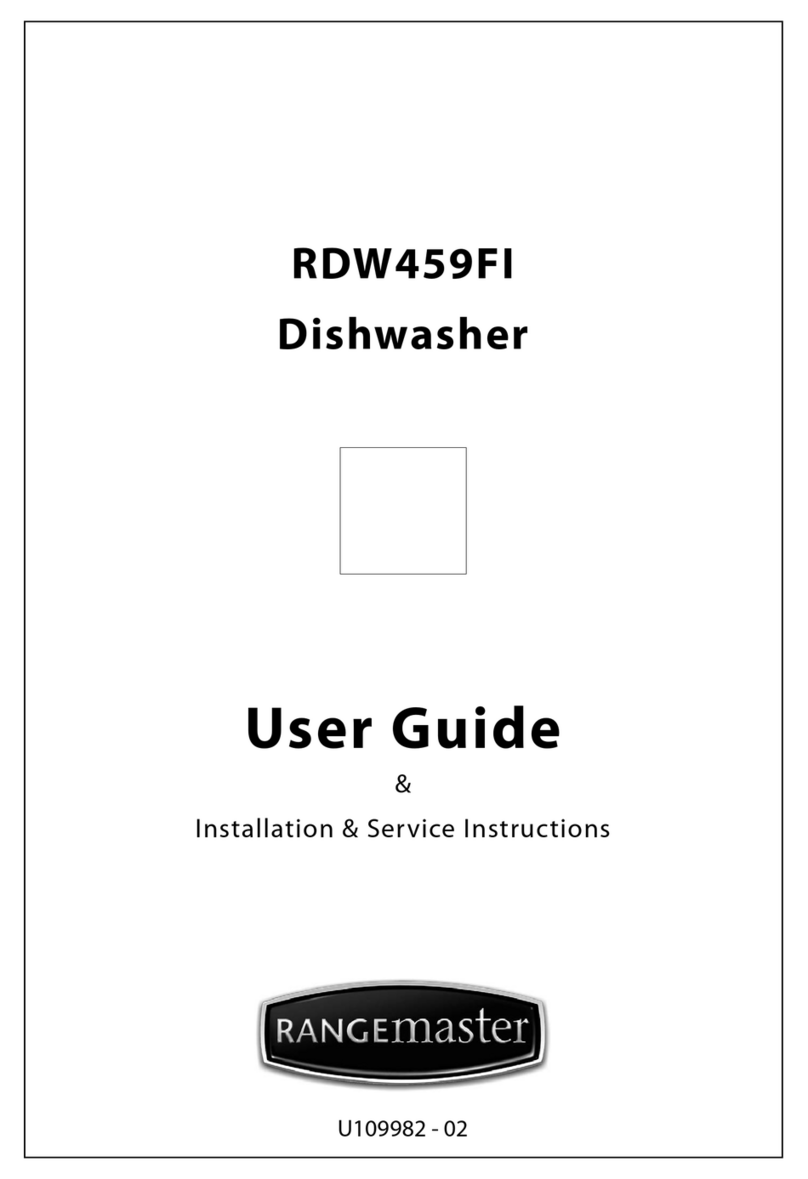1
1. Before You Start
This dishwasher is for use in GB and IE only.
After sales service applies to GB and IE only.
IMPORTANT: For an electronic copy of this user
manual please go to the following address:
www.rangemaster.co.uk/co-ordinating-
collection/dishwashing
At Time of Delivery
Check packaging and dishwasher immediately
for signs of transport damage. If the dishwasher
is damaged DO NOT USE. Contact your supplier
or customer services.
Please dispose of packaging materials properly.
About these Instructions
Please read these instructions carefully before
using this dishwasher. The instructions contain
important information which will help you get
the best out of the dishwasher and ensure safe
and proper installation, use and maintenance.
Keep this manual in a convenient place so you
can always refer to it for the safe and proper
use of the dishwasher.
If you sell the dishwasher, give it away, or
leave it behind when you move house, make
sure you also pass this manual so that the
new owner can become familiar with the
dishwasher and safety warnings.
During Installation
• Site the dishwasher and connect
in accordance with the installation
instructions.
• DO NOT connect the dishwasher to the
electricity supply while carrying out the
installation.
• Make sure that the wiring is properly
earthed.
• The mains electricity supply must conform
to national and local regulations and
the details shown on the dishwasher
nameplate.
• DO NOT connect the dishwasher to the
electricity supply with an extension cable.
• DO NOT connect the dishwasher to a
socket with multiple outlets.
• Built-under and built-in dishwashers
should always be installed under a
continuous work surface attached to
adjacent cupboards. This will make sure
that the dishwasher is stable.
• After the dishwasher has been installed,
the mains plug should be easily accessible.
• DO NOT excessively bend or flatten the
power supply cord during installation. The
dishwasher should not stand on the power
supply cord.
During Normal Use
• Following installation the first wash cycle
must be with the dishwasher unloaded.
• Commercial use of the dishwasher will void
the guarantee.
• The dishwasher MUST only be used for
washing household dishes and cooking
utensils.
• This dishwasher cannot be installed
outdoors.
• DO NOT place heavy objects on the
door or stand on it when it is open. The
dishwasher may tip forward.
• The water inside the dishwasher is NOT
suitable for drinking.
• DO NOT use solvents of any kind inside
your dishwasher. They could cause an
explosion.
• Use only detergent and rinse aid
specifically designed for use in domestic
dishwashers.
• The suitability of plastic items must be
checked before placing them in the
dishwasher.
• Do not place items in the dishwasher that
are not suitable for dishwashing.
• Do not overfill the dishwasher baskets.
This may result in basket movement and
damage the dishwasher.
DocNo.800-0101 - Introduction


